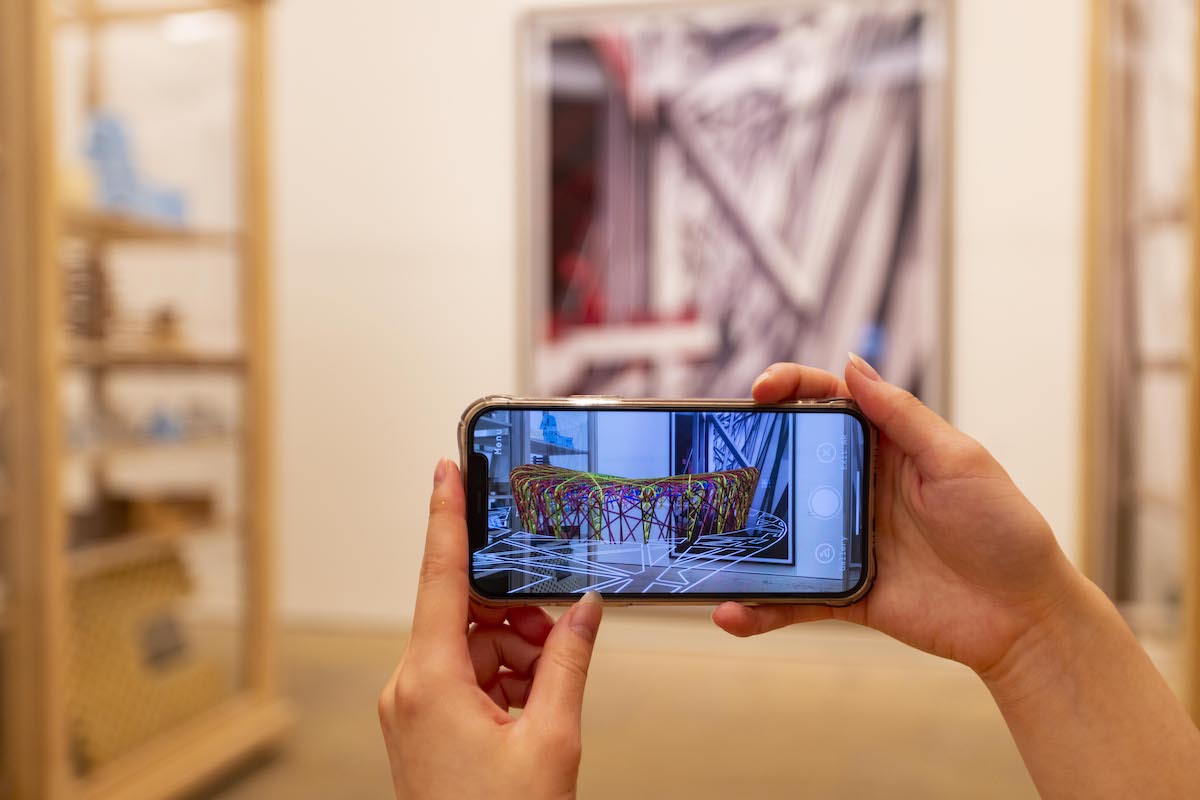Herzog & de Meuron at the Royal Academy
With their exhibition at the RA, Herzog & Meuron carefully consider how people will use their buildings, and the creation and experience of architecture.


The Herzog & de Meuron exhibition at the Royal Academy reminds viewers of the ‘cure’ in ‘curator’. Fittingly, the influential Swiss architecture practice converted the old Bankside Power Station into London’s Tate Modern, and built a vast, aluminium-clad exhibition hall in Basel. They designed the ‘Bird’s Nest’ National Stadium in Beijing. They have developed hospitals and rehab facilities, and it is clear that taking good care is at the heart of everything they do.

Walking into the exhibition, the viewer is confronted with tall vitrines, a section of Herzog & de Meuron’s archive project, which they call ‘Kabinett’. These cabinets are tall and imposing yet, made from glass and softened by light wood, they inspire curiosity, drawing the viewer in to look at the many intricate models collected inside.


While Kabinett invites you to peer inside, nearby there are photographs of the practice’s buildings by the photographer Thomas Ruff that have been digitally manipulated so that you can’t see them clearly. Not only does this remind the viewer that they are looking at a photo – a representation – but it also suggests that buildings are made up things too. By including these photos, Herzog & de Meuron suggest that an image of architecture will always be, well, an image of architecture. What’s far more interesting is a building’s relationship with the people living and breathing inside them.


This idea – that people are essential to architecture – really comes alive through Bêka & Lemoine’s Rehab from Rehab. For a film supposedly ‘about’ REHAB, it doesn’t talk about the clinic at all, but instead follows the people who occupy it. Rather than a typical hospital, it is as if patients, staff and visitors move through a small town with streets and plazas. The building has two storeys, with the patient rooms on the top floor – a bit like a two-up-two-down house – while the main material is wood, which makes the place feel like you are in a garden pavilion. In fact, regular garden courtyards connect the inhabitants to the natural world. So do windows. A two-metre diameter transparent plastic sphere lets the daylight into every room and gives bedbound patients a constant view of the sky.
Contrastingly, the bathhouse feels private and intimate with light penetrating through smaller circular openings in its concrete roof. It has a cave-like sense of stillness and downplayed grandiosity. With its pyramidal shape nodding to the journeys of the gods in ancient Egypt, the space feels transformative, as being in water so often can be – especially, as in the case of one patient, for someone learning to use his limbs again after a severe accident.


Underscoring the idea that people transform spaces, and vice versa, the final room invites viewers to enter one of the cosy rooms at Kinderspital (Children’s Hospital) using augmented reality.

Once again, natural light streams in and the room looks out over a flexible agora. Similarly, in projects such as Prada, Tokyo and the Tate Modern, Herzog & de Meuron have included big empty plazas in their schemes, to nurture lively social spaces. Throughout this exhibition, by presenting their work in such an oblique way, there is plenty of room for the viewer to make up her own mind about it too.

When we visit a care facility we are not walking around admiring the cornices and cantilevers, but willing our loved ones to get better. As such, and by dedicating two thirds of the exhibition to care facilities, they have found the perfect tool to teach viewers heart-and-head at once: buildings on their own are not half as interesting as the people inside them.
By Sammi Gale